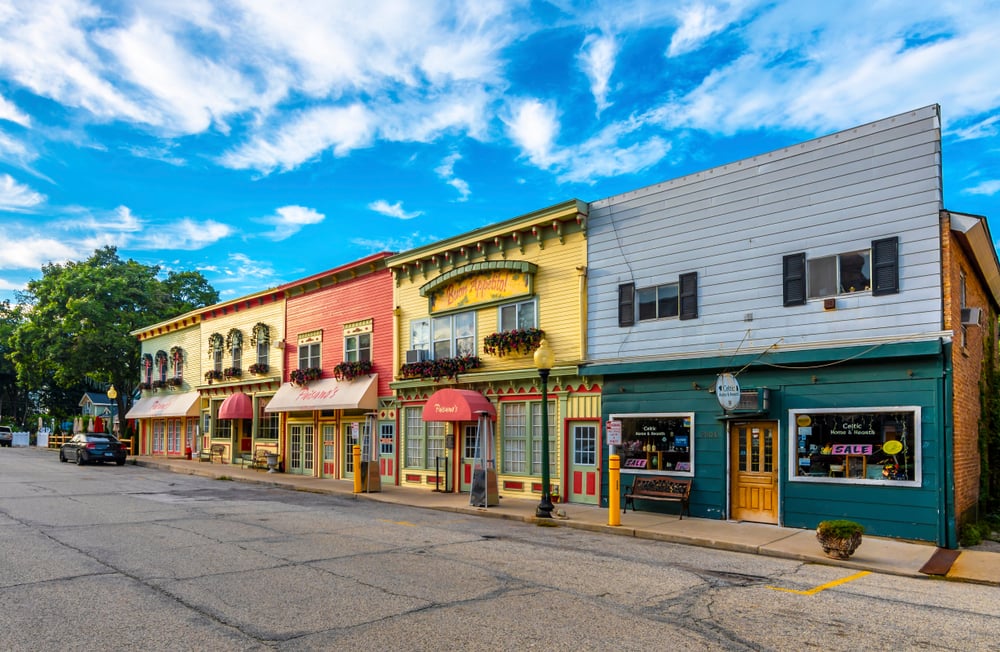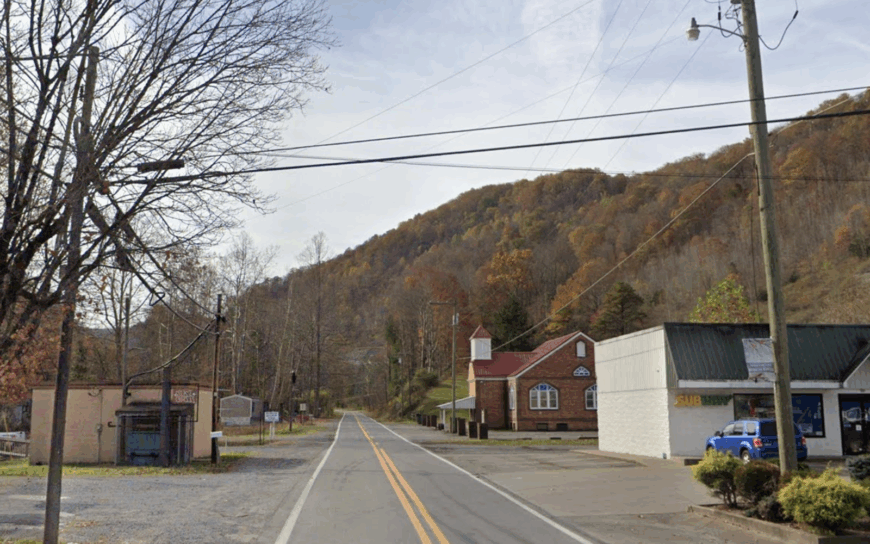
I’ve always been enchanted by the whispering hills and secluded valleys of Western West Virginia. Away from the hustle and bustle of city life, these hidden towns offer a tranquil retreat into nature’s embrace.
Whether it’s the dense forests, rolling countryside, or the quiet murmurs of rivers and streams, there’s something profoundly soothing about these places.
Join me as I count down 25 of the most secluded towns in this region, each with its own unique charm and secrets waiting to be discovered. From hidden hamlets to riverside retreats, these spots are perfect for anyone yearning for solitude and a deeper connection with the great outdoors.
25. Hundred

Hundred folds into the Wetzel County hills like a secret, where narrow hollows and stacked ridgelines muffle the modern world. Its seclusion is simple geometry—long miles of two-lane and switchbacks that keep speed (and strangers) away.
The vibe is woodsmoke and weathered porch railings, coal-camp stories, and garden rows stitched into creek bottoms. Walk gravel lanes to small waterfalls, fish quiet riffles on nameless branches, photograph the old rail remnants at golden hour, or cruise ridge roads that trade views for silence.
A mix of gas work, timber, and farming keeps lights glowing in kitchen windows. Nights are black enough to name constellations without a star chart. It’s the kind of town that teaches you to listen for creek talk and wind in the poplars.
Where is Hundred?

Hundred sits in far northern Western West Virginia, tucked in the Wetzel County hills near the Pennsylvania line. It’s about 25 miles south of Waynesburg, PA, and roughly the same southeast of New Martinsville.
Most travelers arrive via US-250, then ease onto curving secondary roads that slip into the hollows. Close enough for a Saturday drive, far enough that the ridges swallow highway noise whole.
24. Reader

Reader drapes along Fishing Creek, a string of houses and barns hugged tight by sycamores and steep hillsides. Seclusion comes courtesy of the creek’s bends and a spiderweb of backroads that go nowhere fast.
The vibe is hushed and practical—boot-scraped porches, a church bell on Sunday, and front-yard swing sets that squeak in the evening breeze. Cast for smallmouth in deep green pools, follow an old gas-well track to a ridge view, spot spring warblers in creekside willows, or photograph fog lifting off the water at first light.
Gas and farm work are steady as the seasons; everything else runs on neighborly favors. Summer crickets take over when pickup doors click shut. Reader feels like a folded page the world forgot to unfold.
Where is Reader?

Find Reader in central Wetzel County, southeast of Hundred and south of Paden City. It’s roughly 20 miles east of New Martinsville, tucked along WV-20 and quiet county spurs.
The last miles trail the creek through tight curves that slow you to the pace of the water. It’s close to the river towns, yet it keeps its own conversation with the hills.
23. Pine Grove

Pine Grove is a valley-town whisper where Fishing Creek slides past clapboard houses and an old elevator keeps watch. Seclusion here is shaped by steep valley walls and a habit of choosing the long way around.
The vibe feels lived-in and kind—kids on bikes, porch ferns, and evenings that smell like cut grass and rain on hot pavement. Walk the back streets for fading ghost signs, fish under sycamore shade, drive to a high knob for sunset, or trace the creek upstream where kingfishers patrol.
Work follows the land—gas, timber, and fields stitched into the bottoms. When fog settles low, the whole town goes gentle. Pine Grove is the breath you didn’t know you were holding.
Where is Pine Grove?

Pine Grove rests in southern Wetzel County, tucked along WV-20 where Fishing Creek threads through a narrow valley. It’s about 12 miles south of Middlebourne and 20 miles east of New Martinsville, well outside the reach of any interstate. The setting is more creek than concrete, with ridgelines pressing close and the two-lane bending to the water’s course.
Reaching Pine Grove means following WV-20 as it snakes with the valley, then slipping into backstreets that taper off where the hills begin. It’s a place close on the map to larger towns but distanced in feel, the kind of settlement where the approach itself slows you to the creek’s rhythm.
22. Alma

Alma sits low in a Tyler County hollow, a pocket of quiet where a clear-running creek writes its own script around stones. Its tucked-away feel comes from being threaded by WV-18 yet shielded by timber and bends that hide one bend from the next.
The vibe is quiet-hands rural—skiffs of garden soil on tailgates, dogs napping in driveway sun, and the staccato beat of a hammer from a barn being mended. Hunt morels on north slopes, roll a soft-evening drive along the creek, cast ultralight tackle into shadowed runs, or snap photos of hayfields under summer thunderheads.
Farm work and a little oil-and-gas keep mornings purposeful. Night sounds are whip-poor-wills and far-off coyotes. Alma is where the world speaks in inside voices.
Where is Alma?

Alma lies in central Tyler County, roughly 10 miles south of Middlebourne and 20 north of West Union. WV-18 is the spine in, with short gravel spurs peeling into the side hollows.
The last turns go leafy and narrow until the creek is your compass. It’s close enough for a quick errand, yet it feels a county deep.
21. Friendly

Friendly takes its time on a quiet bend of the Ohio River, a tiny grid of streets set back from the water behind old shade trees. Its seclusion comes not from distance but from scale—no bright strip, no big-box glow, just river light and porch lamps.
The vibe is river-plain mellow: bench conversations, a tidy ballfield, and barges that drift past like moving sunsets. Walk the levee at daybreak, cast for catfish at the boat ramp, admire 19th-century façades, or drive the river road at blue hour when the hills turn to silhouettes.
Farming and river-adjacent trades anchor the calendar. When the towboat horn echoes, the town seems to lean in and listen. Friendly is the soft hum between river and ridge.
Where is Friendly?

Friendly sits in southern Tyler County along WV-2, between Sistersville and St. Marys. It’s about 40 miles north of Parkersburg and 30 south of New Martinsville.
The approach is simple—a two-lane that hugs the river—then a turn into a few blocks under big trees. Close to the water, far from hurry.
20. Shirley

Shirley keeps a low profile where Middle Island Creek braids through tight country, hiding pasture and garden behind curtains of maple and beech. Seclusion arrives with the creek crossings and the way hills pinch the road into a whisper.
The vibe is plainspoken and kind—mailboxes with hand-painted names, smoke curling from stovepipes, and pantry shelves put up for winter. Wade for smallmouth, bird the edge for kingfishers, wander an old lane to a hayfield overlook, or sit the tailgate and watch fog lift off the bottoms.
Gas wells and farm chores shape the workday. Twilight lasts longer here, like the valley has its own clock. Shirley reminds you silence can be generous.
Where is Shirley?

Find Shirley in eastern Tyler County, southeast of Middlebourne and northwest of West Union. County roads branch from WV-18 and follow Middle Island Creek through shaded turns.
The last few miles are all water glimpses and timbered slopes. It’s close to the byway, but it feels tucked in the fold of a map.
19. Cairo

Cairo hunkers into a narrow Ritchie County gorge, where sandstone cuts, iron trestles, and the North Bend Rail Trail meet in a hush. Its seclusion is carved by the hills—the town appears suddenly, then disappears just as fast around a rocky bend.
The vibe is trail-town friendly: bike bells, screen-door chatter, and a café that knows your order by the second visit. Pedal through shady rail cuts and over stone-arched bridges, hike to a ridge above the Hughes River, browse a small antiques nook, or picnic where the creek runs glassy.
Tourism brushes the edges, but local life still runs on farm and shop hours. In the evening, the trail goes quiet and the crickets take up the soundtrack. Cairo is a postcard tucked inside a canyon.
Where is Cairo?

Cairo sits in central Ritchie County, about 7 miles east of Harrisville and a few miles west of Ellenboro on the North Bend corridor. Most visitors follow WV-31 or the North Bend Rail Trail itself.
The final approach squeezes through rock cuts that open like curtains to town. It’s easy enough to reach, and somehow hidden in plain sight.
18. Petroleum

Petroleum is a whisper from the oil boom, a few homes and memories tucked along a shady bend of the rail-trail. Seclusion lingers because the hills kept it small when the derricks moved on.
The vibe is nostalgic and outdoorsy—stone culverts, mossy ties, and a creek that talks to itself after rain. Pedal the North Bend Rail Trail to old mileposts, fish a deep run where sycamores lean, photograph weathered oil-era relics, or sit with a thermos at a sunny switchback.
Today, life leans on farm work and a trickle of trail riders. Dusk folds in quickly under the canopy. Petroleum feels like a page left in sepia on purpose.
Where is Petroleum?

Petroleum lies in southern Ritchie County, southeast of Cairo and north of US-50. Access comes by way of WV-16 and local lanes that shadow the trail and creek.
Expect low speeds, narrow shoulders, and a lot of birdsong. It’s close to the highway grid, but wrapped in hills that keep it hushed.
17. Smithville

Smithville spreads thin along WV-47, a ribbon of farms and porches stitched to the folds between the river forks. Its seclusion shows up in the long spaces between crossroads and a sky that seems bigger for the emptiness.
The vibe is honest-plain: feed-store talk, garden rows straight as a hymn, and dogs that lift their heads when the only car of the hour goes by. Drift-fish a shaded bend of the Hughes River, wander to a hillside cemetery for valley views, snap a storm-lit elevator silhouette, or roll a twilight loop that smells like clover and rain.
Farming pays the notes; tradition keeps the time. Night here is full of whip-poor-wills and far-off thunder. Smithville is where the road learns to whisper.
Where is Smithville?

Smithville sits in eastern Ritchie County along WV-47, roughly halfway between Harrisville and Burnsville. You get there by following a two-lane that rides the contours and never hurries.
The last miles trade passing zones for creek shadows and hayfields. It’s near the center of the state and still feels like the edge.
16. Pullman

Pullman tucks into a hollow south of Harrisville, its handful of streets softened by maple shade and the easy cadence of farm life. Seclusion is built into the terrain—ridgelines fold close, and roads make peace with the creek instead of straightening it.
The vibe is neighborly and old-fashioned: church suppers, porch guitars, and a post office that knows every name. Walk to the edge of town for pasture views, bird watch along the rail-trail spur, angle a light rod in a deep pool, or photograph blue-hour silhouettes of barns and hills.
Work follows the land—cows to milk, hay to rake, fences to mend. When evening comes, kitchen windows glow like lanterns. Pullman reminds you the quiet has its own generosity.
Where is Pullman?

Pullman is in southern Ritchie County, about 15 miles south of Harrisville and north of WV-47. WV-16 and smaller county lanes ease you into town at creek speed.
The pavement narrows, the trees close in, and the ridge backs you into calm. Close to the hubs, but tucked smartly out of sight.
15. Creston

Creston sits low on a curve of the Little Kanawha, where weathered pump jacks and fishing skiffs share the shoreline. Its off-the-grid feel comes from distance and the river’s habit of making roads meander.
The vibe is river-plain rustic: one-room memories, old store fronts, and porches that collect stories with the morning mail. Cast for smallmouth from a gravel bar, explore forgotten oilfield traces, push a canoe into mirror-still water at dawn, or cruise the backroads when the sycamores go gold.
Oil-and-gas history lingers, but farm chores rule the week. The night sky here feels close enough to touch. Creston is the quiet you can carry home with you.
Where is Creston?

Creston lies in northern Wirt County, where the Little Kanawha River makes a lazy bend between Elizabeth and Burning Springs. It’s set on WV-5, about 20 miles east of Elizabeth and west of Grantsville, in a pocket where the road and the river run side by side.
The way in follows river-hugging two-lanes, curving with the water and straightening only for bridges. By the time you reach the cluster of houses and old store fronts, you’ve already eased into its unhurried pace—short on mileage, long on quiet.
14. Palestine

Palestine gathers along the Little Kanawha like a quiet aside—white porches, an old church steeple, and river light moving across kitchen walls. Seclusion comes from being bypassed by hurry; the river and the ridges conspire to keep it that way.
The vibe is history-soft: cemetery stones with hand-cut letters, a vintage storefront, and Saturday strolls that find neighbors on the same loop. Walk the riverbank at first light, photograph sycamore bark and tin roofs, drive to a nearby covered bridge site, or watch for herons spearing minnows in shallows.
Farming holds the center while small-town trades fill the gaps. When fog lifts off the river, the day begins in a whisper. Palestine is the kind of hush you remember later.
Where is Palestine?

Palestine sits in western Wirt County along WV-14, a few miles south of Elizabeth. It’s roughly 25 miles southeast of Parkersburg.
You arrive via river-shadowing two-lanes that feel older than the map. It’s near a regional hub, yet the river keeps it feeling far.
13. Harts

Harts breathes from the steep hollows of Lincoln County, a string of homes and porches hugging the Guyandotte River where morning fog hangs like lace. Seclusion arrives via curves—WV-10 winds through sandstone cuts and timbered slopes that keep the pace modest and the traffic sparse.
The vibe is coal-camp legacy and front-porch kindness: guitar pickin’, dogs asleep in driveway sun, and garden beans cooling in the shade. Slip a kayak into a glassy river reach, hike ridge roads for long views, fish for smallmouth along rock ledges, or photograph old trestles when the light goes copper.
Folks make a living with a mix of commuting, forestry, and stubborn self-reliance that suits the terrain. After dark, owls trade calls from opposite hillsides and the river keeps its own soft time. Harts is the kind of quiet that settles into your bones.
Where is Harts?

Harts sits in southwestern West Virginia’s Lincoln County, along the Guyandotte River south of Barboursville and north of Chapmanville. It’s reached on WV-10, a winding two-lane that snakes through hollows and past rock walls.
The final miles drop to river level, where cell bars fade and the water becomes your landmark. Close enough for a day trip from the Huntington area, yet far enough to feel like you’ve slipped behind the hills and out of the rush.
12. Jacksonburg

Jacksonburg tucks into the folds of Wetzel County where Fishing Creek braids past porches and sycamore shade keeps the afternoon cool. Its hush comes from the hills themselves—close-shouldered ridges and a narrow two-lane that meanders at creek speed.
The vibe is old-country practical: hand-painted mailbox names, garden rows stitched into the bottoms, and a church bell that still marks the hour. Cast for smallmouth in deep green pools, follow a gas-well lane to a ridge overlook, photograph a weathered storefront at golden hour, or watch mist lift off the water at dawn.
Work here is the steady kind—farming, timber, and a bit of gas—quiet as a neighbor’s wave. Summer nights are dark enough to see satellites drift and bats skitter low over the creek. It’s the sort of place that reminds you how patient the world can be.
Where is Jacksonburg?

Jacksonburg sits in central Wetzel County along WV-20, between Pine Grove and Reader in West Virginia’s far west-north hills. It’s roughly a half hour east of the Ohio River at New Martinsville.
You reach it by following WV-20 as it threads Fishing Creek, then easing onto short spurs that end where the hills lean in. Close on the map to river towns, but once the road narrows to sycamores, it feels a county away.
11. East Lynn

East Lynn breathes in the timbered hollows of Wayne County, its center of gravity the broad, blue reach of East Lynn Lake. Seclusion comes easy here—the road dead-ends into water and forest, and the hills lean in close.
The vibe is lake-country easy: bait buckets, aluminum boats, and campfire smoke threading through hemlocks. Launch for crappie and bass, hike WMA trails where deer step into the path, paddle quiet coves at sunrise, or photograph fog lifting off the water while a lone heron hunts.
A modest mix of recreation, forestry, and commuting to Wayne/Huntington knits together daily life. Nights are full of owls and the slap of water on hulls. East Lynn is a pocket where time drifts like a boat on a calm morning.
Where is East Lynn?

East Lynn sits in southern Wayne County, about 15 miles southeast of the town of Wayne and 30 miles south of Huntington. Access comes via WV-37 and sinuous county roads that follow the lake’s fingers.
The last stretch narrows to forest and shoreline, with cell bars slipping away. It’s close enough for a day trip, far enough to feel like you’ve stepped off the clock.
10. The Hidden Valley of Ben’s Run
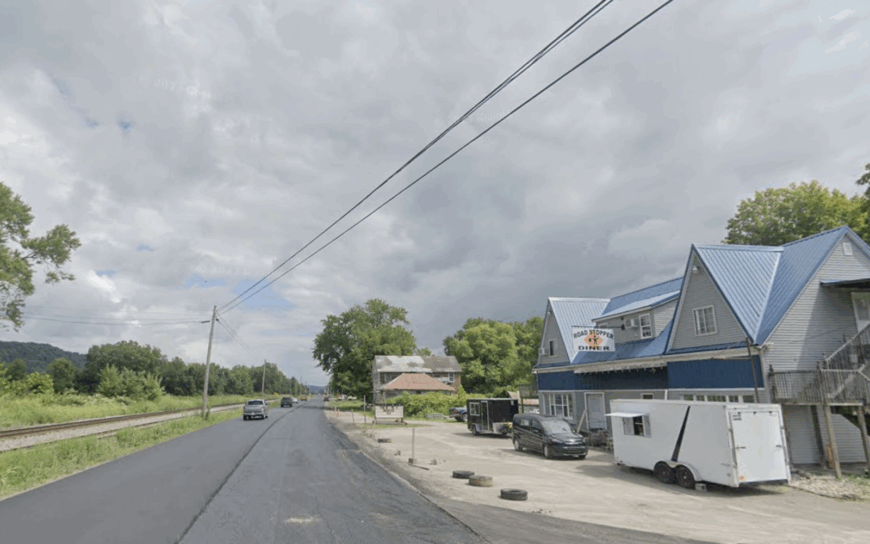
Ben’s Run is a tiny community nestled in the heart of Tyler County, with an approximate population of just a few hundred residents. I love how this quiet locale offers a peaceful escape, with the nearby Ohio River providing opportunities for fishing, boating, and serene riverside walks.
The area is largely agricultural, with farming being one of the main activities sustaining the local economy. What truly sets Ben’s Run apart is its remote valley setting, surrounded by rolling hills and dense woodlands that act as natural barriers from the outside world.
The lack of commercial development means you won’t find bustling shops or hectic traffic here—just the gentle sounds of nature and the friendly waves of passing neighbors. For me, the seclusion of Ben’s Run is perfect for those looking to disconnect and immerse themselves in the simplicity of rural life.
Where is Ben’s Run?
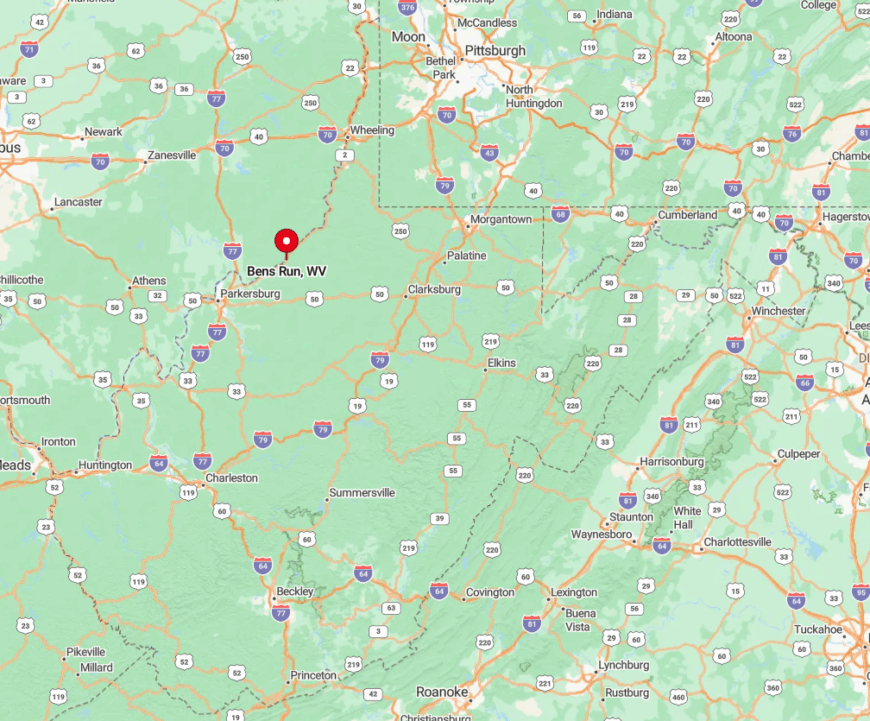
Ben’s Run is located in Tyler County, in the northwestern part of West Virginia, tucked away along the Ohio River. Its secluded nature is enhanced by the surrounding hills and forests, which create a natural barrier from larger towns and highways.
To get there, you’ll likely travel along the scenic Route 2, winding your way through the countryside and along the river’s edge. The journey itself feels like a step back in time, far removed from the hustle of city life, making Ben’s Run a hidden gem worth discovering.
9. Frozen Camp’s Natural Refuge
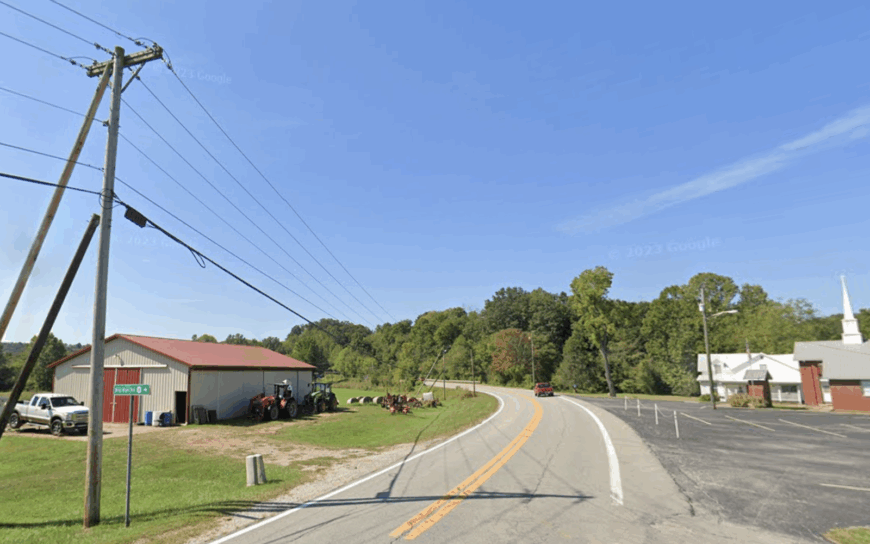
Frozen Camp is a quaint community in Jackson County, with a population that barely reaches into the triple digits. One of my favorite aspects of Frozen Camp is the Frozen Camp Wildlife Management Area—a haven for outdoor enthusiasts offering fishing, hunting, and hiking amidst untouched natural landscapes.
The area doesn’t boast any significant industry; instead, it’s the natural resources and serene environment that define life here. Seclusion is a hallmark of Frozen Camp, with vast stretches of undeveloped land and dense forests providing a buffer from the outside world.
The lack of urban development means nights are dark, perfect for stargazing, and the days are filled with the tranquil sounds of nature. For those seeking solace away from city noises, Frozen Camp offers an idyllic refuge.
Where is Frozen Camp?
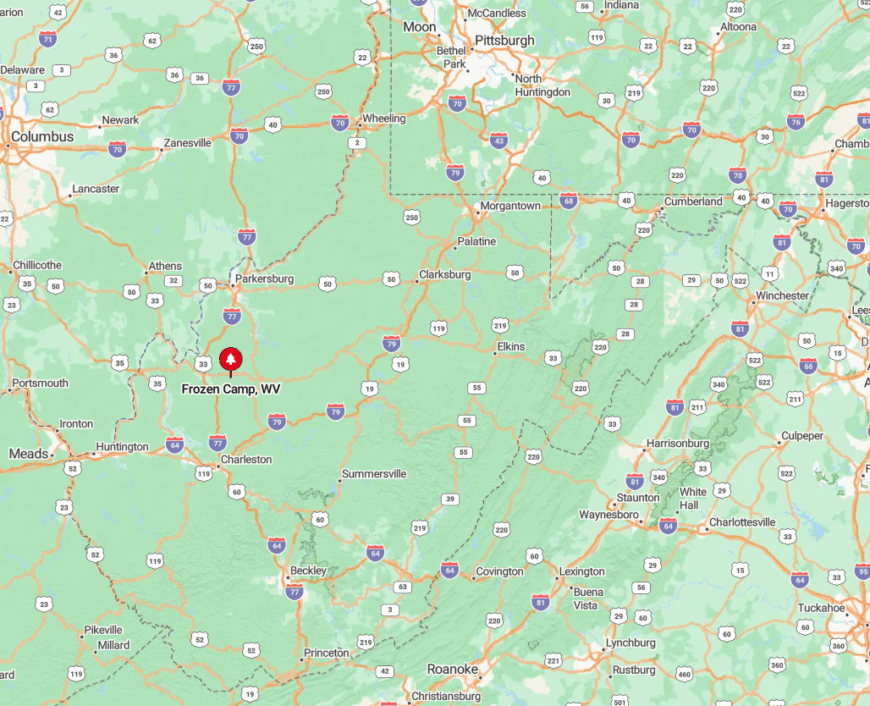
Situated in Jackson County, Frozen Camp lies in the western part of West Virginia, not far from the towns of Ripley and Ravenswood. Its secluded charm comes from its location off the beaten path, nestled amidst rolling hills and expansive woodlands.
Reaching Frozen Camp typically involves a scenic drive along country roads, with the final stretch taking you through winding routes that showcase the area’s natural beauty. This hidden location ensures that Frozen Camp remains a peaceful escape, untouched by the rapid pace of modern life.
8. Statts Mills’ Undisturbed Beauty
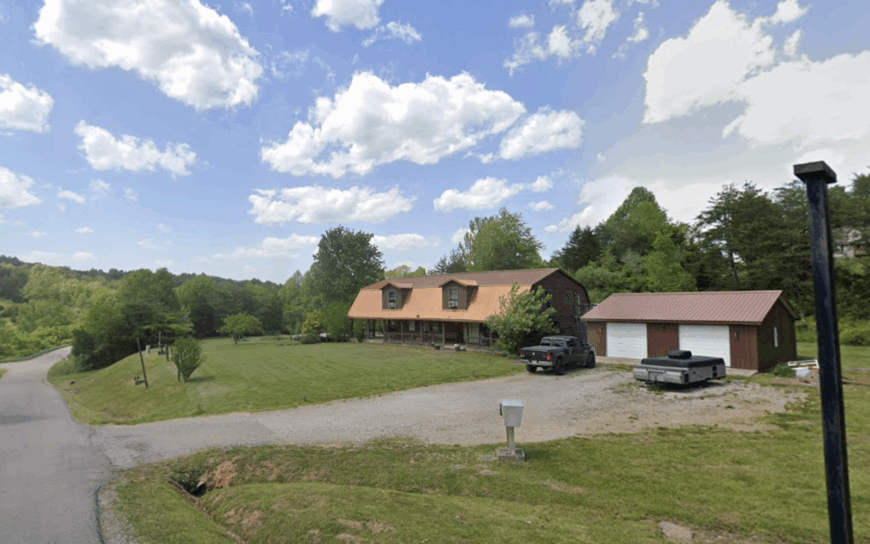
Statts Mills, a small unincorporated community in Jackson County, boasts a modest population that enhances its tight-knit feel. I find the area’s undisturbed beauty captivating, especially with the proximity to Mill Creek where fishing and canoeing are popular pastimes.
Agriculture plays a significant role here, with many residents involved in farming and maintaining the rural landscape. The seclusion of Statts Mills stems from its location away from major roads and its expansive lots that provide ample space between neighbors.
There’s a tranquility that permeates the community, free from the noise and congestion of urban areas. It’s the perfect place for anyone like me who appreciates the peace that comes with country living.
Where is Statts Mills?

Located in the northeastern part of Jackson County, Statts Mills sits comfortably away from the bustle of larger towns like Ripley. Its seclusion is amplified by the miles of countryside that separate it from major highways, ensuring minimal traffic and a quiet atmosphere.
To reach Statts Mills, you’ll traverse scenic backroads that wind through rolling hills and farmland, a journey that itself is a delightful escape. This remoteness is what makes Statts Mills such an attractive spot for those seeking an undisturbed and tranquil environment.
7. Leroy’s Countryside Haven

Leroy is a peaceful community in Jackson County, with a small population that embodies the essence of rural West Virginia life. I enjoy visiting Leroy for its beautiful landscapes, including lush farmlands and scenic views that provide ample opportunities for photography and leisurely walks.
The local economy is primarily driven by agriculture, with many residents engaged in farming and livestock raising. Leroy’s seclusion is due to its setting amidst sprawling countryside and limited access to major roads, which keeps the hustle and bustle at bay.
The community’s simplicity and slow pace offer a refreshing contrast to city life, allowing residents and visitors alike to unwind. For me, Leroy feels like a haven where time moves just a bit slower, making it easy to appreciate the little things.
Where is Leroy?
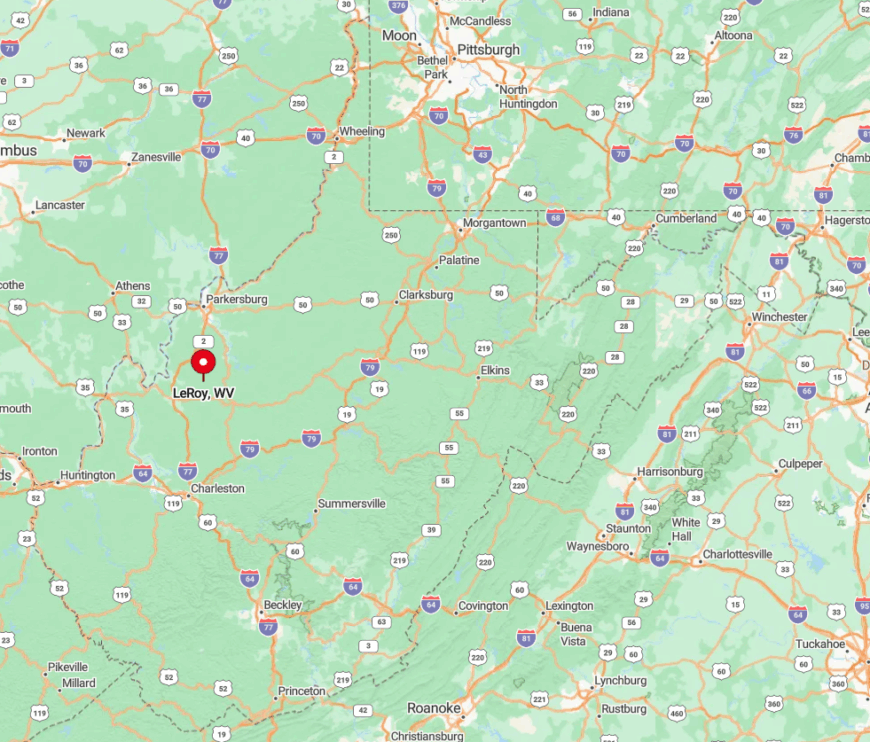
Leroy is nestled in Jackson County, positioned in the western part of West Virginia, not far from the Ohio border. Its secluded nature is a result of its distance from larger towns and the surrounding terrain, which includes rolling hills and dense forests.
Accessing Leroy typically involves a drive along rural routes, weaving through picturesque settings that highlight the region’s natural beauty. This journey off the main highways enhances the sense of escape, making Leroy a perfect destination for those seeking solitude in a countryside setting.
6. The Quiet Charm of Wayne, West Virginia
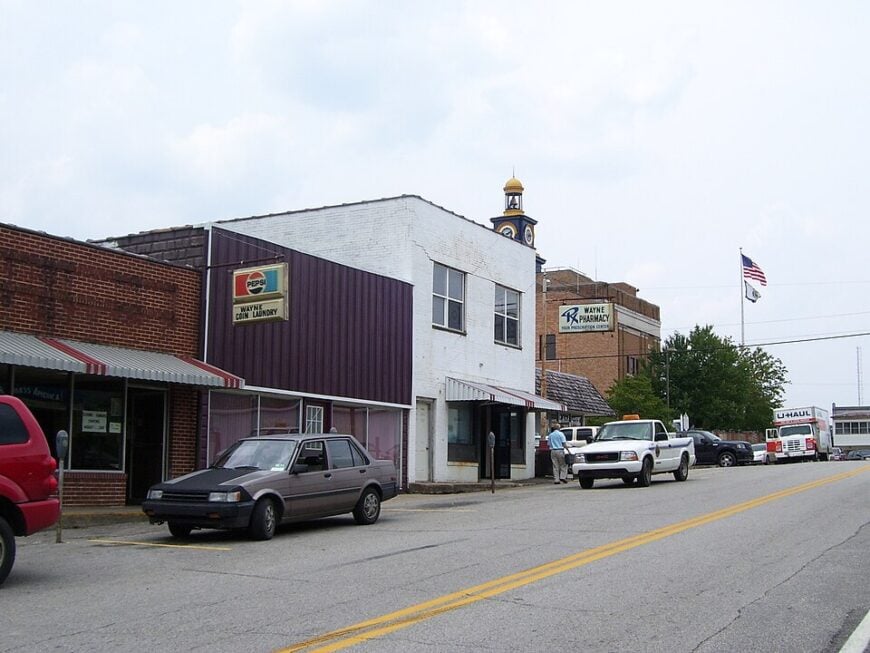
I find the town’s atmosphere to be one of simplicity and history, with rolling hills and dense forests surrounding the area, making it a haven for those who appreciate the beauty of nature. While Wayne is the county seat, it remains a small town with a close-knit community, where life moves at a slower, more deliberate pace.
Unlike bustling urban centers, Wayne is defined by its local businesses, historic sites, and the natural beauty of Twelve Pole Creek, which winds through the region. The town’s history is deeply tied to the development of the railroad and early settlers who carved out a life in the rugged landscape.
Where is Wayne?
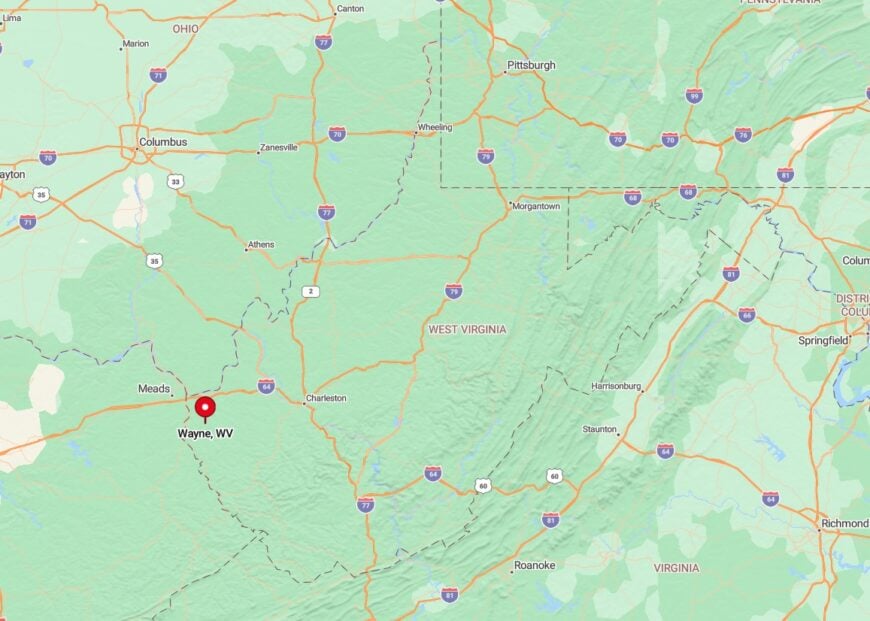
Wayne is located in Wayne County, in the western part of West Virginia, near the border with Kentucky. Its position within the Huntington–Ashland metropolitan area provides access to larger cities while still maintaining its rural character.
To reach Wayne, one must travel through scenic country roads that showcase the untouched beauty of the Appalachian foothills. This remoteness adds to its appeal, making it a peaceful retreat for those looking to escape the noise of modern life. Whether exploring its historical roots or simply enjoying the quiet serenity, Wayne offers a glimpse into the enduring spirit of small-town West Virginia.
5. Romance: A Secluded Escape
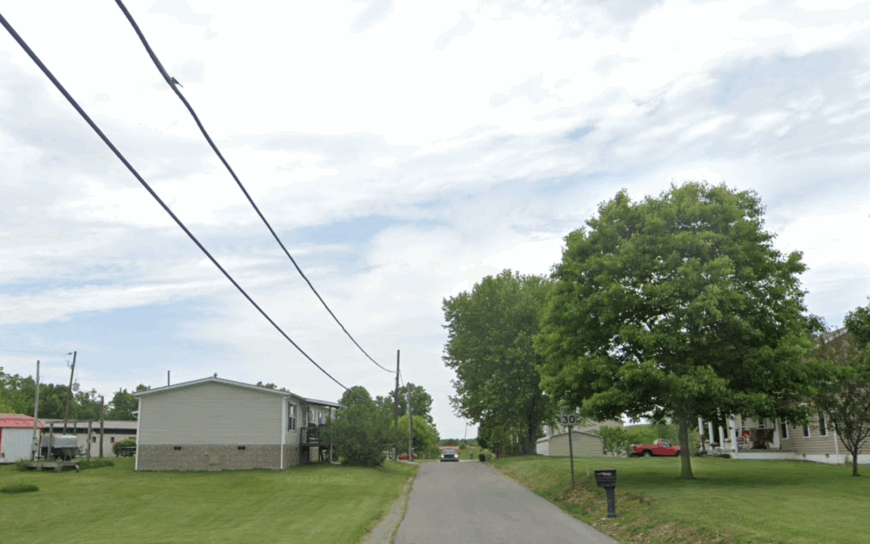
Romance is a charming little community in Jackson County, with a population that barely exceeds a few dozen people. I adore the rustic allure of this place, where the untouched landscapes provide a serene backdrop for activities like hiking, bird watching, and simply enjoying the great outdoors.
There isn’t much industry here; instead, residents embrace a simple life, often relying on small-scale farming and artisan crafts.
What makes Romance truly secluded is its sparse population and the rolling hills that envelop the area, creating a sense of being worlds away from the hectic pace of modern life. The tranquility here is palpable, offering a quiet retreat that feels almost like a different era.
Where is Romance?
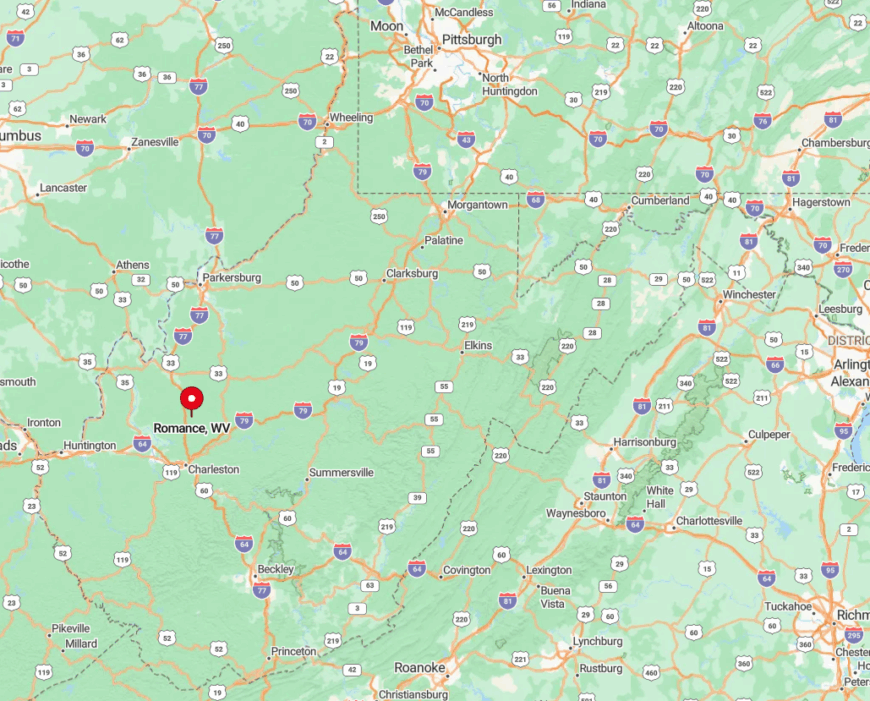
Nestled in Jackson County, Romance is located in the western part of West Virginia, not too far from the Kanawha River. Its seclusion stems from its distance from larger towns and the meandering country roads that lead there.
Getting to Romance involves a peaceful drive through scenic landscapes, with the final stretch taking you deeper into the countryside. This remoteness ensures that Romance remains an idyllic rural haven, perfect for those wanting to escape and perhaps find a bit of inspiration.
4. Letart’s Riverside Retreat
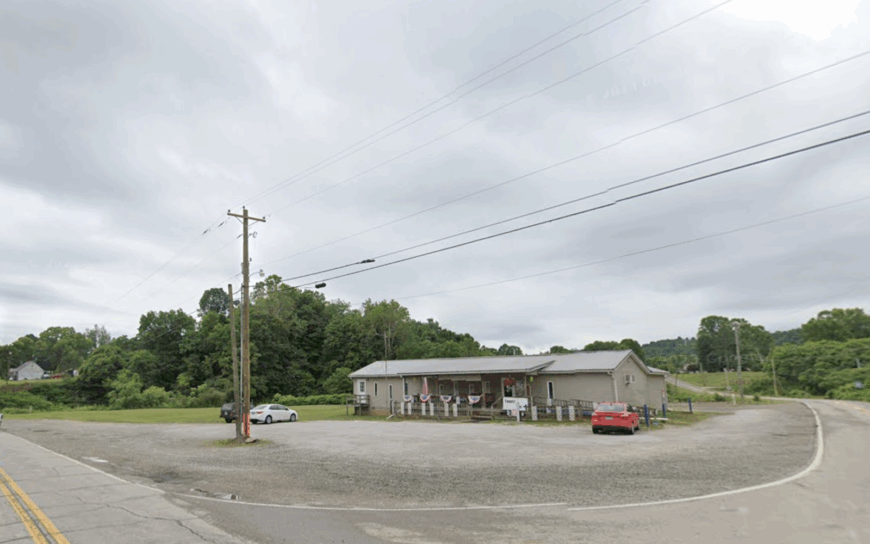
Letart is a tranquil enclave in Mason County, with a modest population that enjoys the serene setting along the Ohio River. One of my favorite activities here is taking in the scenic water views, whether it’s fishing, boating, or simply relaxing by the riverside.
The area’s economy is primarily based on agriculture and some river-related industries, but it’s the minimal development that preserves its quiet charm.
Letart’s seclusion comes from the expansive countryside and the natural barrier provided by the river itself, keeping it tucked away from urban sprawl. The combination of water and land offers a unique environment where nature is at the forefront of daily life.
Where is Letart?
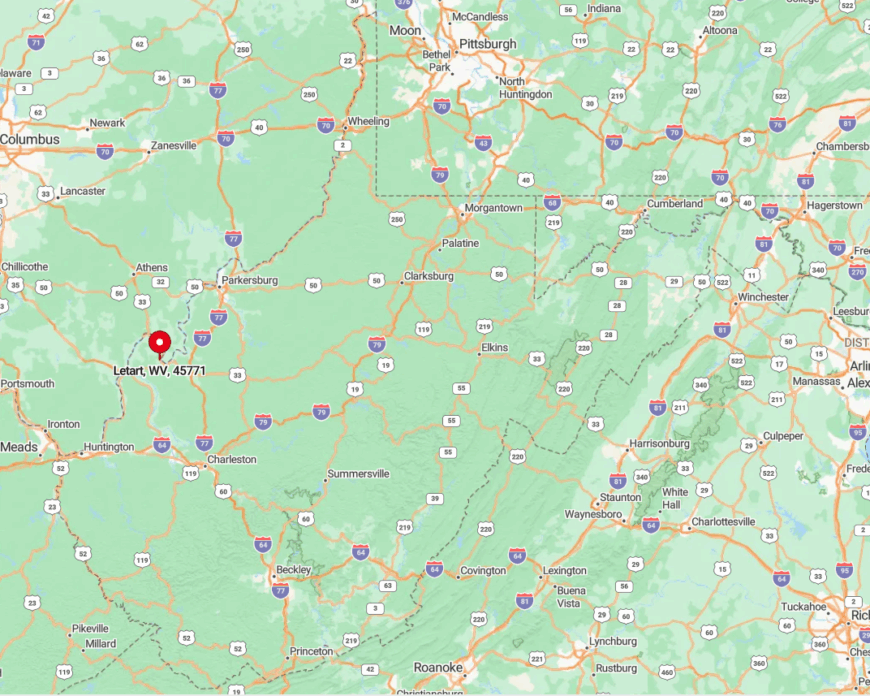
Located in Mason County, Letart sits along the banks of the Ohio River on West Virginia’s western border. Its secluded nature is due in part to its position away from major highways and the surrounding rural landscapes.
To reach Letart, I usually take the scenic riverside routes, which offer breathtaking views and a peaceful drive. The town’s location along the river not only adds to its beauty but also enhances its sense of isolation from the fast-paced world beyond.
3. The Quiet Solitude of Mount Alto
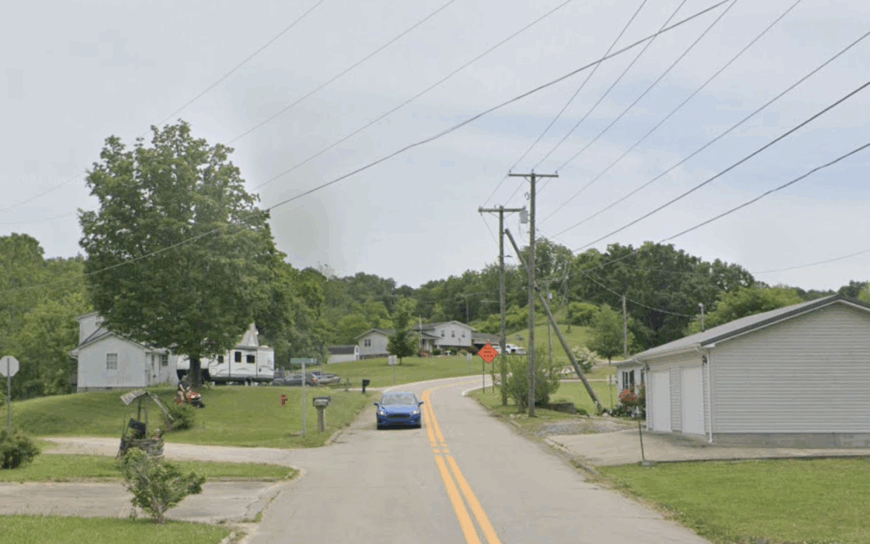
Mount Alto, a small community in Mason County, is home to a population that reflects its tranquil setting—small and close-knit.
I appreciate the vast countryside that surrounds Mount Alto, offering opportunities for hiking, wildlife watching, and simply soaking in the natural beauty. There isn’t a significant industrial presence here; the area is largely made up of family-owned farms and woodland.
The seclusion of Mount Alto is heightened by the natural barriers of rolling hills and forests, which not only provide privacy but also a buffer from the noise of larger towns. It’s a place where the quiet is almost tangible, and life moves at a more relaxed pace.
Where is Mount Alto?

Sitting in the eastern part of Mason County, Mount Alto is comfortably positioned away from major urban areas. Its secluded charm is due to both its physical location and the rural roads that connect it to the outside world.
Getting to Mount Alto involves navigating scenic byways that traverse through West Virginia’s picturesque landscapes. This journey through nature sets the tone for a visit where one can truly disconnect and enjoy the peaceful environment.
2. Wilderness Gap’s Untouched Serenity
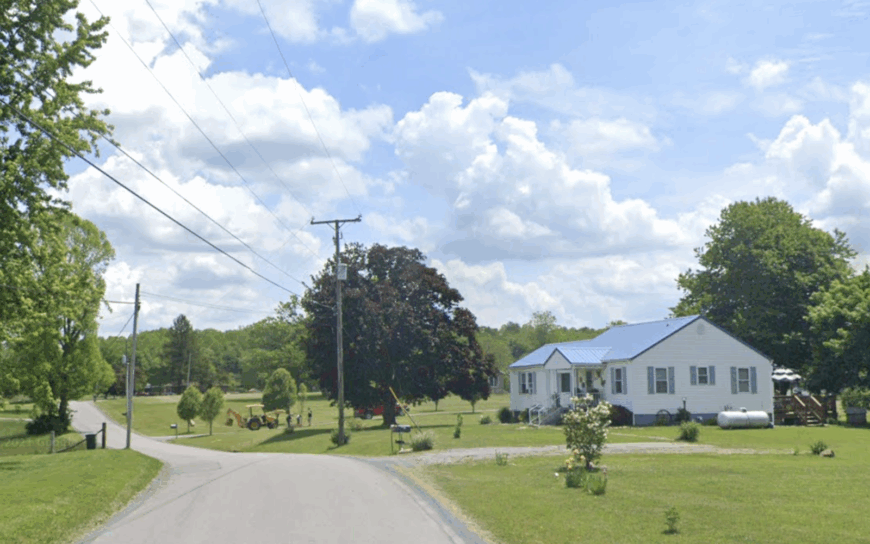
Wilderness Gap is a serene area in Jackson County, with a minimal population that enhances its untouched atmosphere. The expansive woodlands here are a dream for nature enthusiasts, offering endless opportunities for hiking, bird watching, and immersing oneself in the tranquility of the forest.
There isn’t much in the way of industry, which helps preserve the natural environment and contributes to the area’s pristine condition.
The seclusion of Wilderness Gap is largely due to the large lot sizes and the dense forests that dominate the landscape, providing both privacy and a deep connection with nature. For me, it’s a place where you can truly escape the distractions of modern life and find peace in the simplicity of the outdoors.
Where is Wilderness Gap?
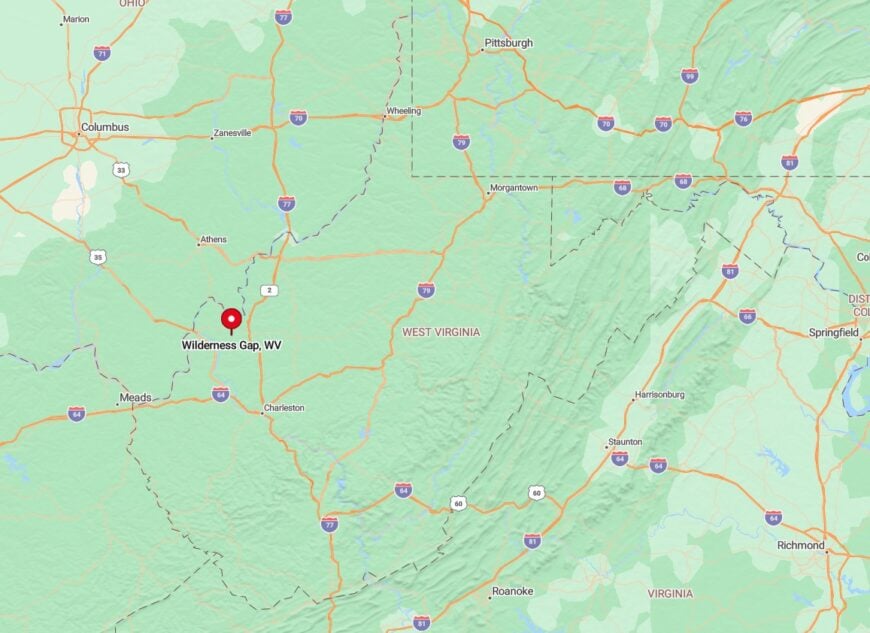
Located in Jackson County, Wilderness Gap is tucked away in the heart of West Virginia’s lush landscapes. Its seclusion is a result of its remote setting, far from major highways and urban centers, surrounded by miles of unspoiled nature.
Getting there involves traveling through winding country roads, enveloped by towering trees and the occasional glimpse of wildlife. This journey through the wilderness is part of the experience, making Wilderness Gap a true retreat for those seeking solitude and a deeper connection with the natural world.
1. The Hidden Hamlet of Left Hand
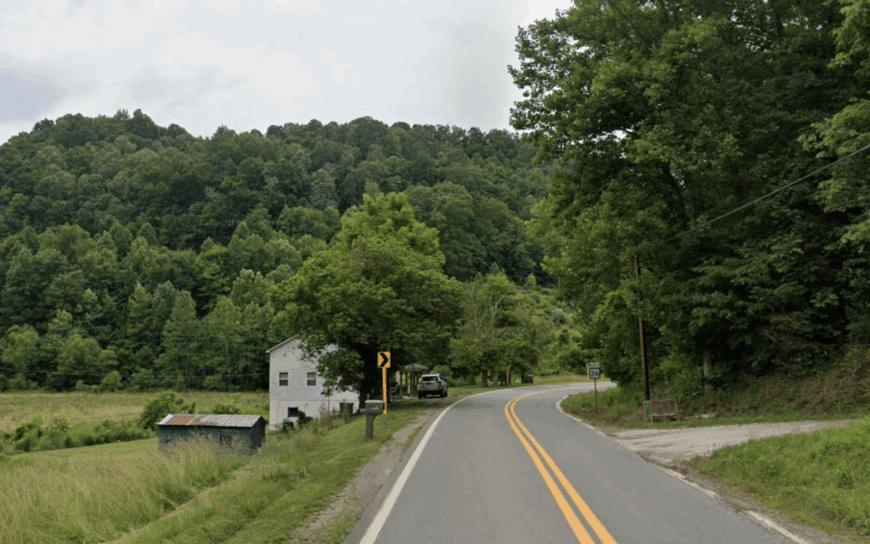
Left Hand is a charming hamlet located in Roane County, with an approximate population of just a few hundred people. I find its secluded charm irresistible, nestled among rolling hills and dense forests that seem to stretch endlessly.
Outdoor activities here are centered around nature—hiking, fishing in nearby creeks, and exploring the scenic countryside. The main industries are small-scale farming and local artisan crafts, reflecting the community’s self-sufficient and rural lifestyle.
What makes Left Hand truly secluded is its position far from urban centers, with limited infrastructure and a landscape that naturally shields it from the hustle and bustle. For me, Left Hand offers a peaceful sanctuary where one can slow down and appreciate the simple joys of life.
Where is Left Hand?
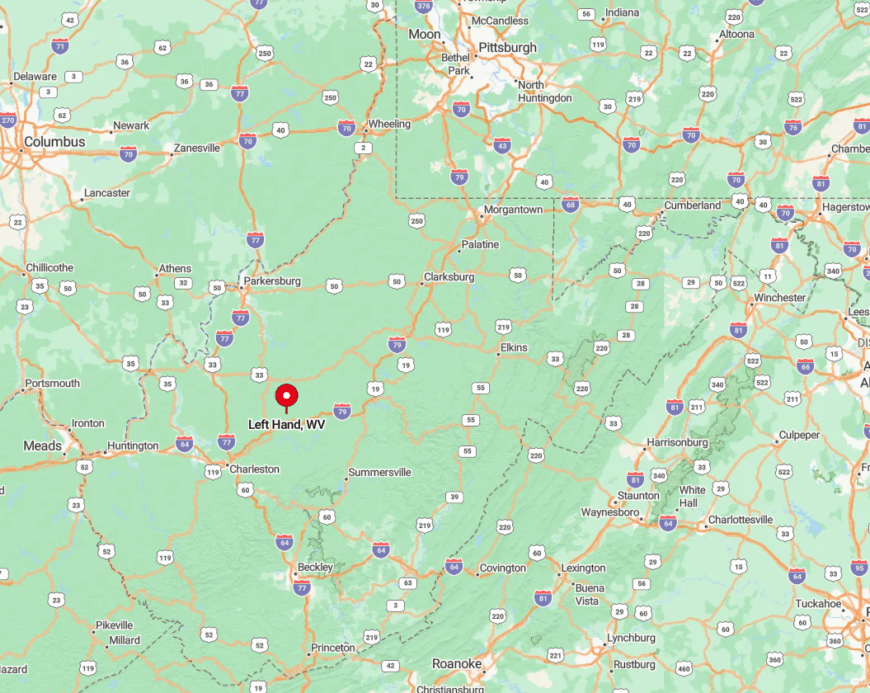
Situated in Roane County, Left Hand lies in the central part of West Virginia, away from the main routes and larger towns. Its seclusion is enhanced by the surrounding hills and forests, which create a natural barrier and contribute to the area’s serene ambiance.
To reach Left Hand, you’ll likely travel along narrow, winding roads that meander through picturesque landscapes, adding to the feeling of stepping into a hidden corner of the state. This isolation is what gives Left Hand its unique character, making it a perfect spot for those seeking a quiet retreat.





